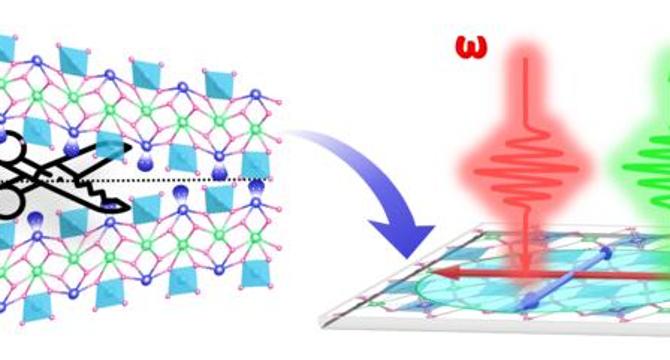Bioengineer
1M
13

Image Credit: Bioengineer
Scientists Harness Lone-Pair Electrons as Chemical Scissors to Engineer 2D Van der Waals Oxides
- Scientists from Fujian Institute of Research on the Structure of Matter, Chinese Academy of Sciences have created a novel approach, denoted as "chemical scissors," to develop 2D van der Waals oxides using lone pair electrons.
- The researchers produced ISM (InSbMoO₆), a stable 2D van der Waals oxide, which has shown exceptional air stability and in-plane anisotropy, which makes it ideal for use in nanoscale optoelectronics devices.
- The team isolated single-layer samples of ISM using mechanical peeling techniques, which allowed them to maintain the integrity of the newly created two-dimensional structures.
- The effective second-order nonlinear susceptibility observed in ISM exemplifies its potential usefulness in a variety of advanced technological platforms, such as frequency converters and optical switches.
- ISM provides a promising solution for next-generation photonic devices and integrated circuits. The newly developed oxide should integrate seamlessly with existing systems and push the boundaries of performance.
- The concept of using lone pair electrons as chemical scissors illuminates pathways for the discovery of other two-dimensional van der Waals oxides, potentially yielding a rich library of new materials with tailored properties.
- The research could influence industries that rely heavily on advanced materials and currently operate in a fast-evolving landscape. Discoveries such as ISM could herald significant strides in sustainability and energy efficiency.
- The findings reflect the ongoing commitment to innovation within the field and showcase the intricate connections between fundamental research and practical applications.
- As the fields of materials science and photonics converge, the potential applications for ISM and similar materials could redefine optoelectronics, providing unprecedented solutions to current and future challenges.
- Overall, this pioneering work could play a central role in shaping the next generation of high-performance electronic and photonics devices.
Read Full Article
Like
For uninterrupted reading, download the app